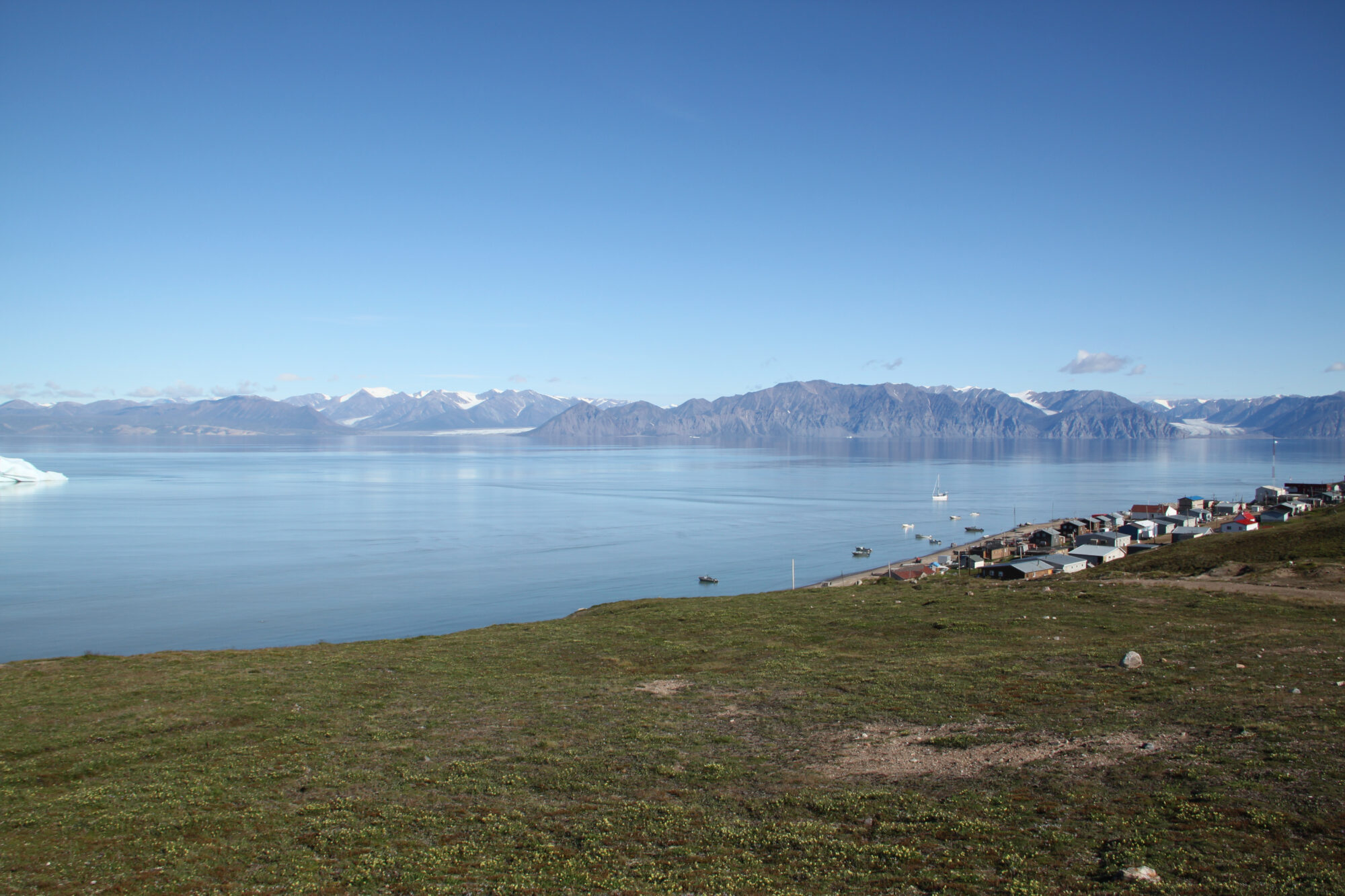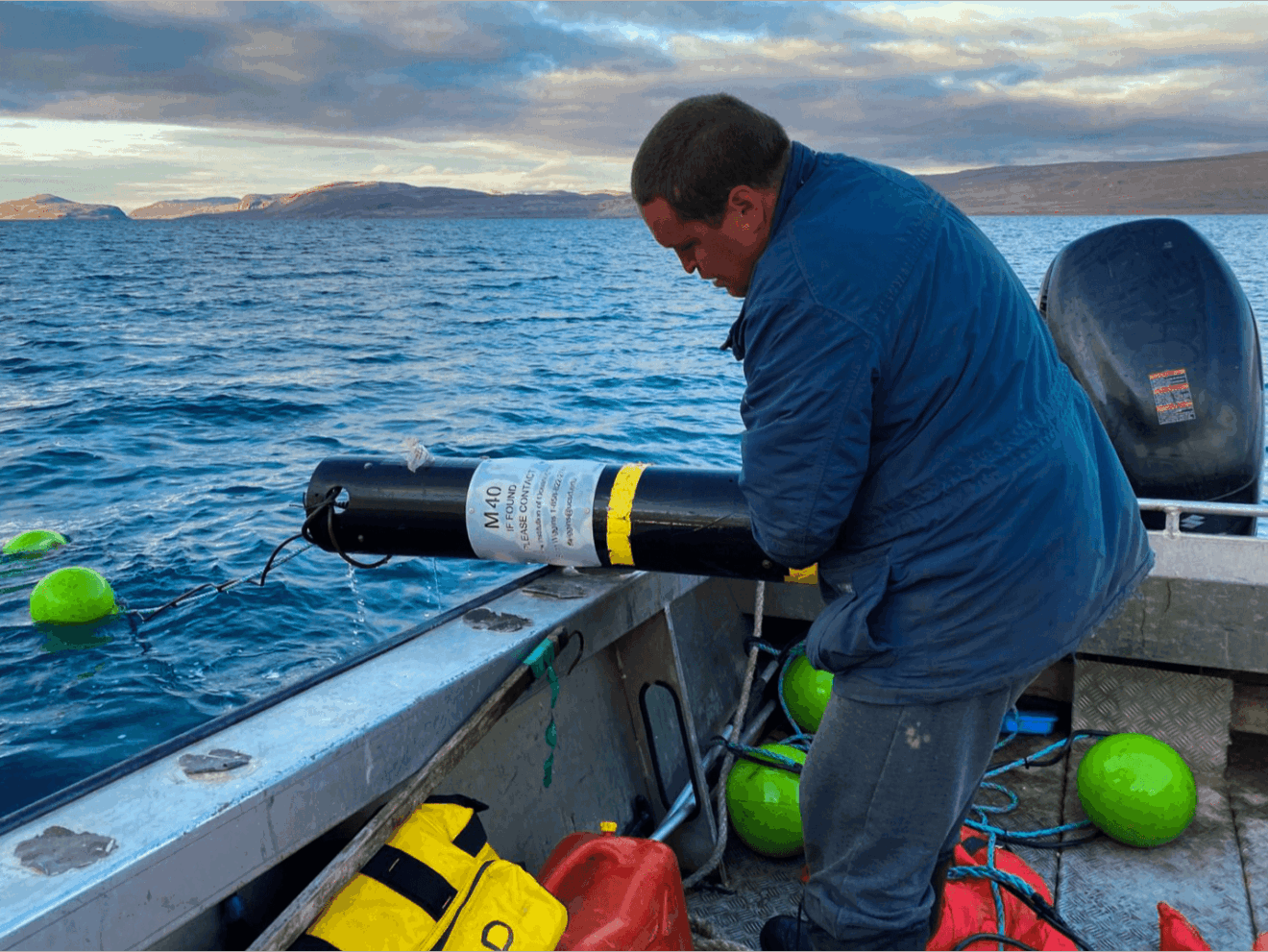
Monitoring the Impact of Increased Shipping on Narwhal in Eclipse Sound
Monitoring the Impact of Increased Shipping on Narwhal in Eclipse Sound
Ruth Teichroeb | January 25, 2021
Data obtained from hydrophones in previous years has shown that narwhal, more sensitive to noise than other whales, are being disturbed by the volume of ship traffic. At the same time, the Baffinland Iron Mines Corporation is now seeking approval to double its annual production at the Mary River mine, located at the southern end of Eclipse Sound. Shipments of iron ore would increase from six to 12 megatonnes, resulting in a jump in ship traffic from about 318 trips each year to 636. These vessels also travel through the nearby Tallurutiup Imanga National Marine Conservation Area.
Although COVID-19 travel restrictions prevented southern-based staff from traveling to Baffin Island, Alex Ootoowak, a technician from Pond Inlet who works for Oceans North, was able to retrieve the two hydrophones and refurbish them late in the summer. One hydrophone is located in Milne Inlet and monitors vessel traffic from the Mary River mine, and the other is east of Pond Inlet at the entrance to Eclipse Sound.
Data obtained from hydrophones in previous years has shown that narwhal, more sensitive to noise than other whales, are being disturbed by the volume of ship traffic. At the same time, the Baffinland Iron Mines Corporation is now seeking approval to double its annual production at the Mary River mine, located at the southern end of Eclipse Sound. Shipments of iron ore would increase from six to 12 megatonnes, resulting in a jump in ship traffic from about 318 trips each year to 636. These vessels also travel through the nearby Tallurutiup Imanga National Marine Conservation Area.
Although COVID-19 travel restrictions prevented southern-based staff from traveling to Baffin Island, Alex Ootoowak, a technician from Pond Inlet who works for Oceans North, was able to retrieve the two hydrophones and refurbish them late in the summer. One hydrophone is located in Milne Inlet and monitors vessel traffic from the Mary River mine, and the other is east of Pond Inlet at the entrance to Eclipse Sound.

Image – This map shows locations of acoustic monitoring sites in Eclipse Sound.
Credit – Oceans North
The hydrophones must be refurbished annually, which requires switching batteries and adding new memory cards. They are then redeployed for another year of acoustic monitoring. On August 13, Alex traveled three hours by boat to retrieve the Milne Inlet hydrophone from its underwater location.
“I hit the release button and it popped up a few metres from the boat,” Alex said. “The retrieval went incredibly smoothly.”
He took the hydrophone back to his home and spent two long nights refurbishing the device while on the telephone with Joshua Jones, a scientist from the Scripps Institution of Oceanography in La Jolla, California. Scripps joined the study in 2016 and provided two sophisticated acoustic devices, called High-frequency Acoustic Recording Packages, or HARPs, that can record 24 hours a day throughout the year. Prior to the pandemic, Joshua traveled to Pond Inlet annually to help maintain the hydrophones.

Image – Alex Ootoowak retrieves hydrophone from Milne Inlet location in August 2020.
Credit – Julie Killiktee
“The refurbishment was what gave me grey hairs,” said Alex. “I was on the phone with Joshua until four in the morning while he diagnosed the problems from thousands of miles away. It was a learning curve.”
On September 19th, Alex traveled an hour east by boat to retrieve the Pond Inlet hydrophone and redeployed the recently refurbished device at that location. The second hydrophone was redeployed in Milne Inlet on September 28th.
Data collected from the hydrophones, including noise from vessels and calls between whales and other marine mammals, is sent to Scripps for analysis. Narwhal are very chatty marine mammals, communicating with whistles, clicks and buzzing sounds that can be picked up on the hydrophones. Certain narwhal calls occur at frequencies that overlap with ship noise, which can interfere with communication between the whales. Noise from vessels can cause behavioural disturbances, and the effects of this can add up over time. Combining this data from the hydrophones with observations of narwhal behaviour from other research projects can help measure the cumulative impacts of ship noise on the marine habitat.

Image – Retrieving Pond Inlet hydrophone in September 2020.
Credit – Julie Killiktee
In the future, Oceans North hopes to install a hydrophone in Admiralty Inlet, west of the current monitoring sites. This is another important narwhal summering area and is relatively free of ship traffic, making it an important refuge for the whales. COVID-19 travel restrictions prevented this installation in 2020.
Ruth Teichroeb is communications director for Oceans North.
